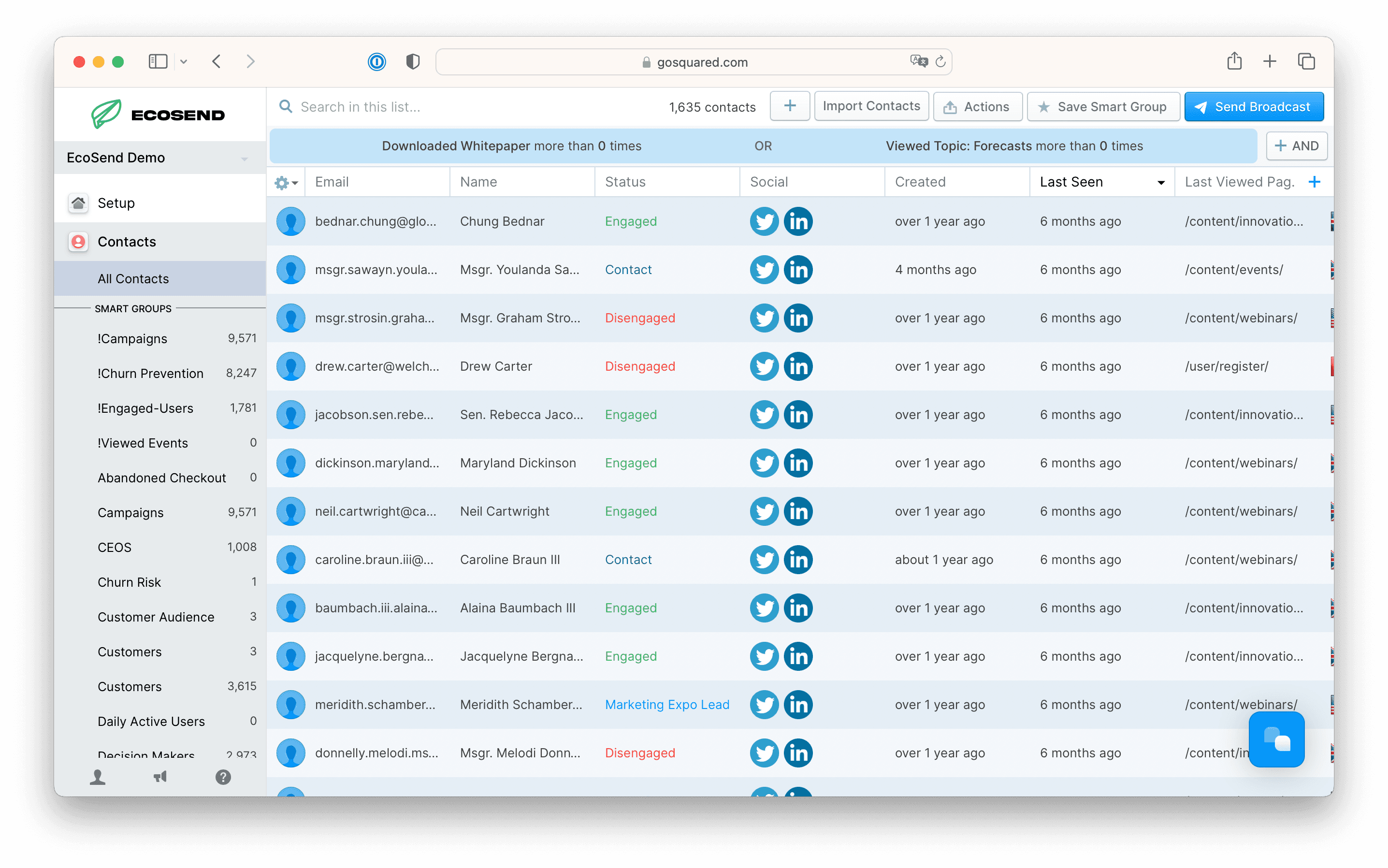SupportIntegrate your data
Integrate your data
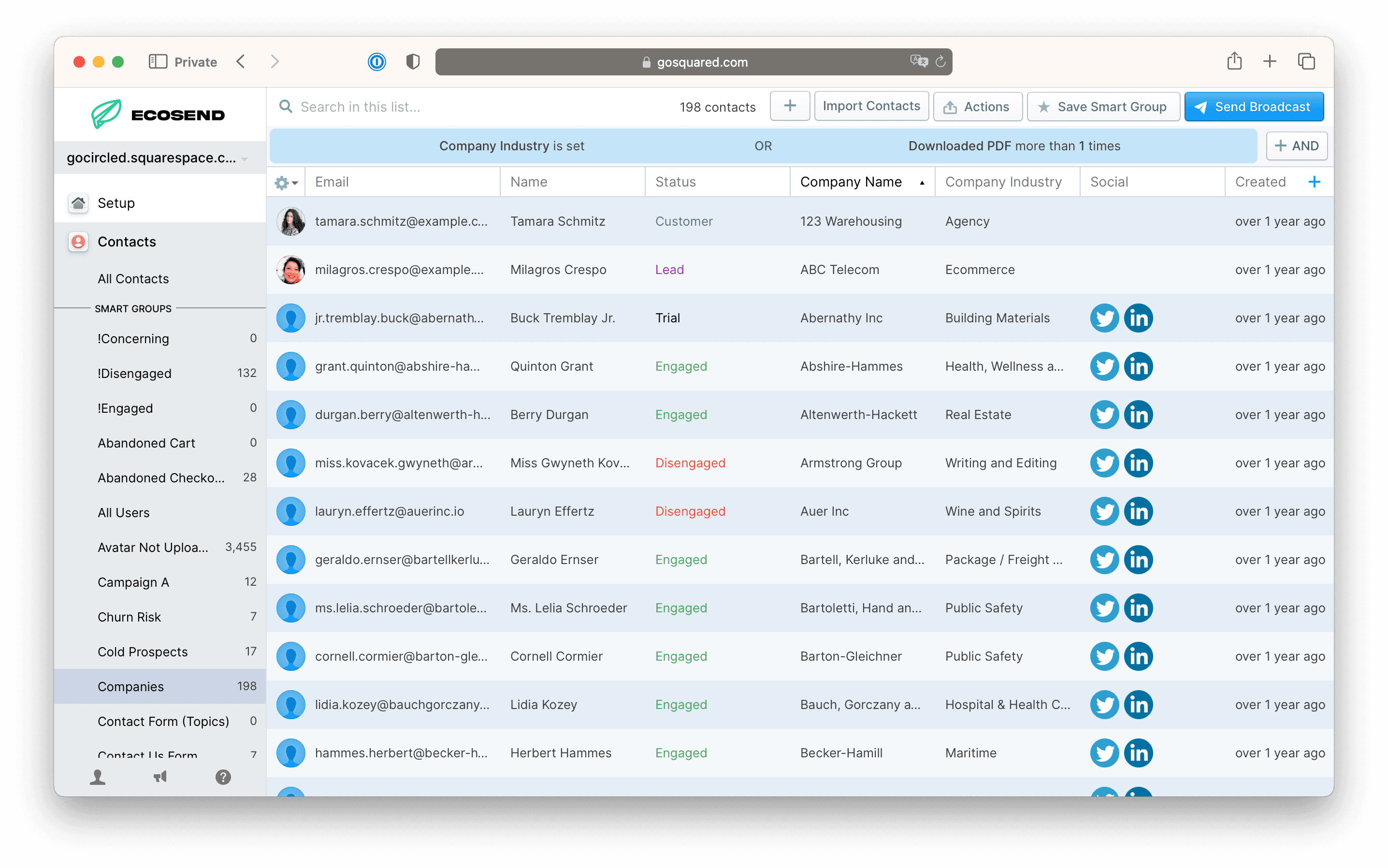
Installing the EcoSend Tracking Snippets Step 1️⃣ - Frontend Tracking
The first step is to install the EcoSend pageview tracking code. This is a simple installation process of copying a pre-defined code and pasting it within the header tags of your site.
You can find the code for your project by heading to Current Project > General > Code Snippet
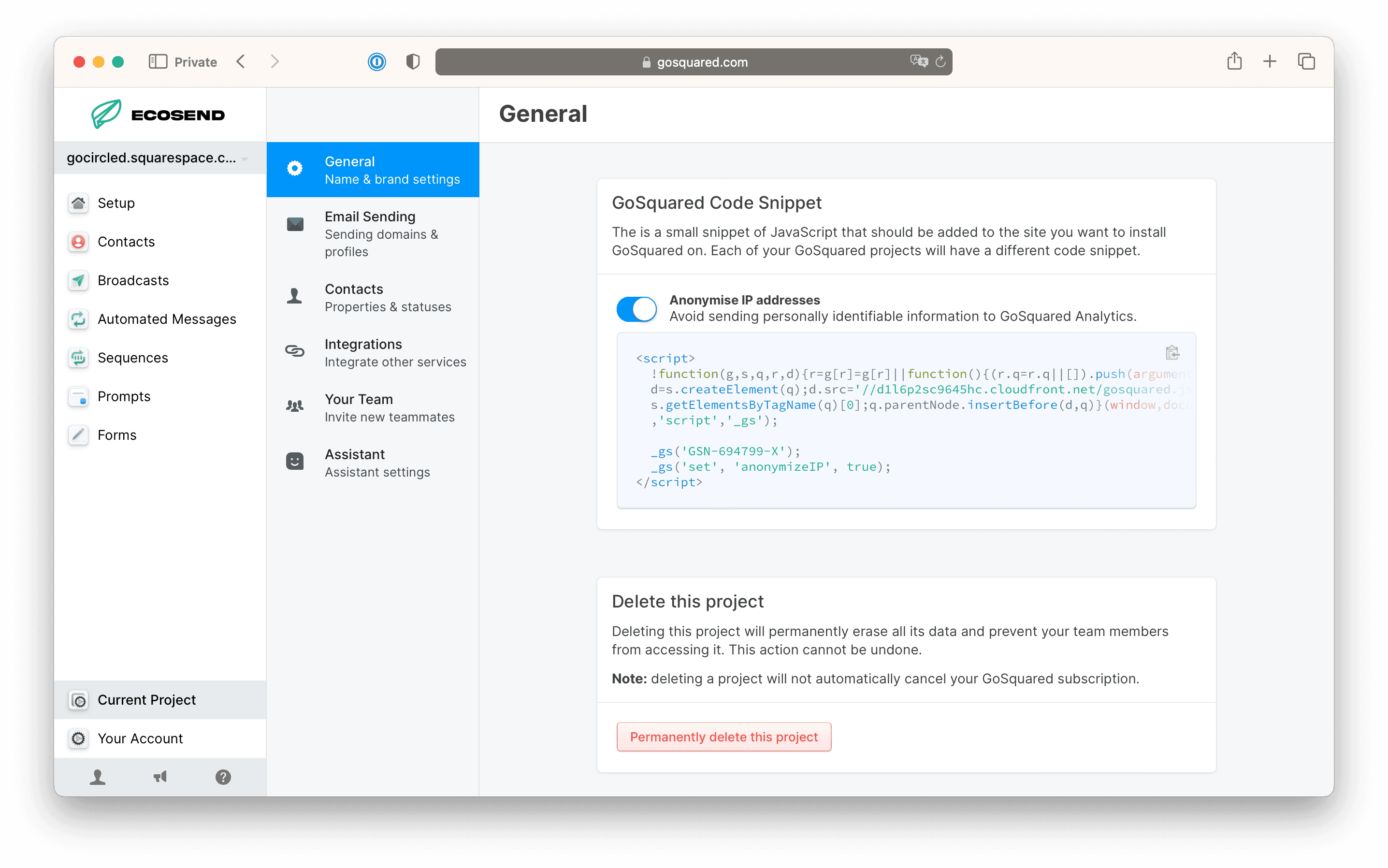
Installing the EcoSend Tracking Snippets Step 2️⃣ - Identifying Users
Calling the identify function creates or updates a profile in your Contacts section.
You can pass back as many different properties about that user as you like.
A cookie is also set that tracks the user's pageviews/events against their profile.
An email address or unique ID is needed to identify a user.In addition to identifying your logged-in users, you can track up to 1000 custom properties onto your user profiles. In other platforms these are often referred to as 'tags'.
Common use-cases for custom properties include:
- Subscription status
- Free trial status
- Agency group
- Number of assets
- Subscribed to newsletter
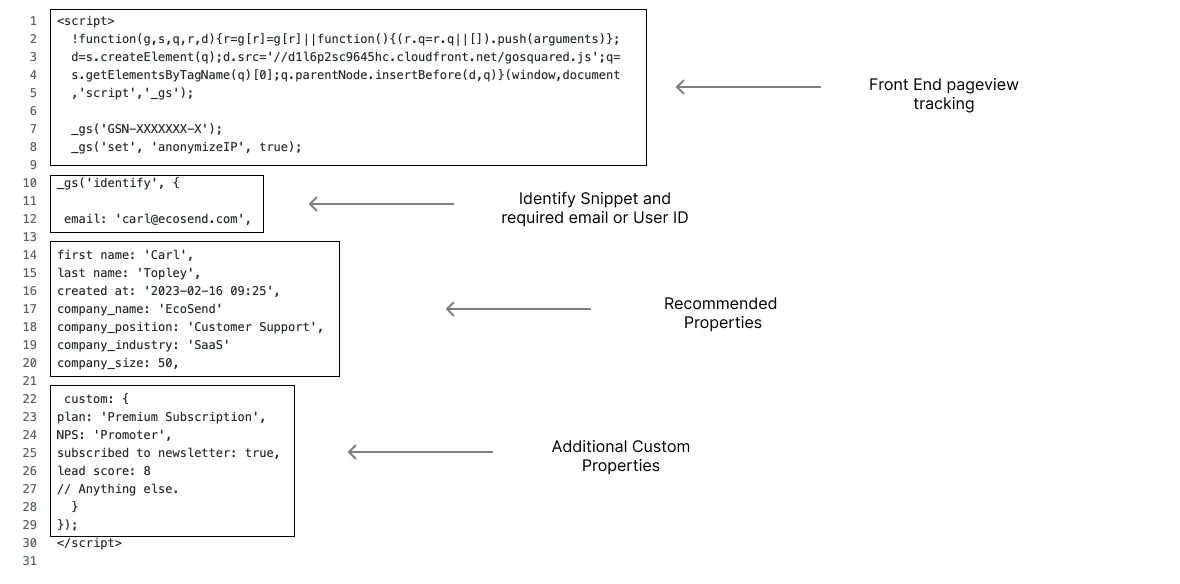
Installing the EcoSend Tracking Snippets Step 3️⃣ - Tracking Events
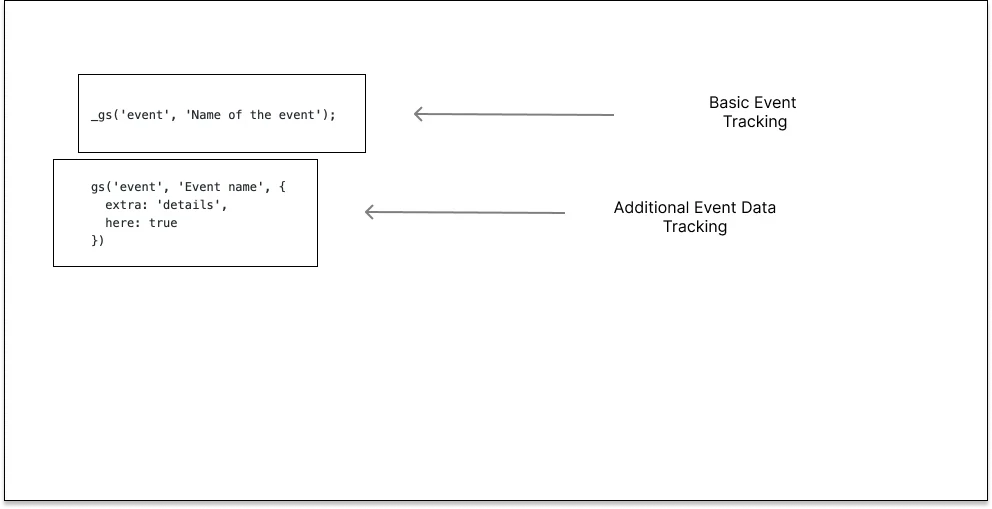
You should also consider tracking key events, such as important activation points in your user's onboarding journey.
User actions, application errors, state transitions, and activity of all kinds can be tracked as an event.
Common actions our clients track as custom events include:
- Profile picture uploaded
- Content viewed
- Comment created
- Whitepaper downloaded
